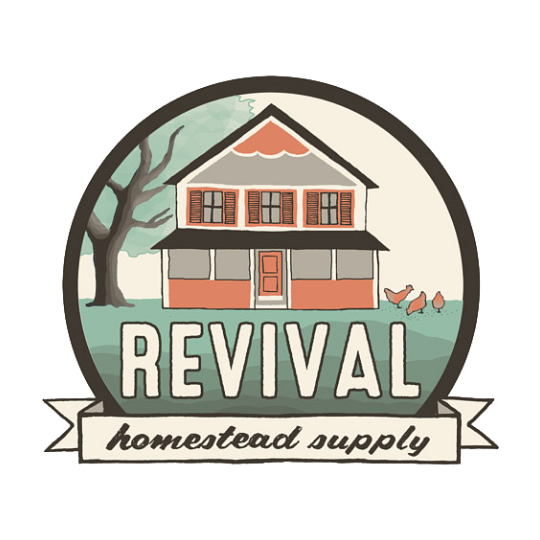Where to Find Raw Milk and Why You Should
Originally posted on 21 September 2016
Raw milk is a more controversial topic that it deserves. It is impossibly hard to get your hands on, thanks to government regulations, and the fear that surrounds raw milk is vastly disproportionate to the number of actual cases of food-borne illness caused by it. Raw milk should be sought after, not feared. So why should you go out of your way to drink raw milk?
what's so good about raw milk?
1. Raw milk is easier to digest, even for the lactose intolerant.
The Weston A. Price Foundation conducted an informal survey of over 700 families, and determined that over eighty percent of those diagnosed with lactose intolerance no longer suffer from symptoms after switching to raw milk. (source)
2. The vitamins and minerals naturally present in milk are more bioavailable in raw milk.
According to Dr. Deborah Gordon, pasteurized milk, "is a chemically altered substance, heated to remove pathogens and bacteria and to prolong its shelf life. The resultant low-enzyme activity makes it difficult to digest, the altered fat content renders the vitamins and minerals difficult to absorb, and the residual drugs and antibiotics pose a threat to human health. On top of this, the naturally occurring beneficial bacteria have been destroyed." (source)
3. Raw milk contains scores of beneficial bacteria that are killed during pasteurization.
"Natural organic raw milk contains living, beneficial bacteria, enzymes, lactase forming bacteria, and many enzyme based pathogen killing systems. It can significantly boost immunity (especially in children who get sick frequently), help heal asthma, improve digestive function and ability, improve the bioavailability of vitamins and minerals and deliver essential fats for cell protection." (source)
4. Farms that sell raw milk produce better milk from happier, healthier cows.
State regulations are much stricter on farms selling raw milk, which means their cows are generally grass-fed and raised in better, cleaner conditions to keep bacteria and coliform counts down the old-fashioned way. The practice of pasteurization excuses inhumane farming practices that produce filthy milk, unfit for drinking unless pasteurized.
5. When you buy raw milk, you support small, local farms that are more likely to practice ethical farming methods.
Raw milk is a difficult business to be in, thanks to government regulation. So farmers who commit to a life in the raw milk business tend to be dedicated to the ethics of post-industrial farming and everything it can do to heal humans, animals and earth alike. They certainly aren't in it for the money...
6. Children who drink raw milk are less likely to develop allergies, asthma and more.
Way back before corporations controlled scientific research, the Lee Foundation for Nutritional Research (Milwaukee, Wisconsin; Published on Dec. 11, 1939) conducted a study that found children fed raw milk are more resistant to TB, scurvy, flu, diphtheria, pneumonia, asthma, allergic skin problems and tooth decay. In addition, their growth and calcium absorption was superior. (source)
7. You're actually more likely to get a food-borne illness from pasteurized milk than from raw milk.
Statistically, there are far more reported cases of illness caused by pasteurized milk, as well as a host of other foods whose sale is unrestricted. (source) Both raw and pasteurized milk harbor bacteria but the bacteria in raw milk is the healthy bacteria of lactic-acid fermentation while the bacteria in pasteurized milk is the bacteria of spoilage. And the overall bacteria count of milk produced under clean conditions is much lower than that of pasteurized milk. (source)
8. Raw milk is unhomogenized and full-fat.
Let's be honest: the more cream in your milk, the more delicious it is. And if you ask Weston Price, Sally Fallon, or the Paleo diet, we should all be consuming more saturated fats like milkfat, not less. To label milk as "whole" in the grocery, it must contain 3.25% milkfat, but actually unadulterated milk commonly contains as much as 5% milkfat. And then there's homogenization. What's with that? There is absolutely nothing undesirable about unhomogenized milk, unless shaking the carton really gets your goat. It also gives you the opportunity to separate the cream out, if you so desire, and make goodies like butter, ice cream or whipped cream.
the legalese
Raw milk laws vary state to state, but in Massachusetts, you won't see raw milk in grocery stores or at farmers markets. Raw milk can only be purchased at the farm it was produced on, and must carry a warning label scary enough to frighten away the faint of heart. Milk must be sold within 5 days, tested at least once a month and maintain bacterial and coliform limits far stricter than pasteurized milk. New York & Vermont have law similar to Massachusetts, while Maine, New Hampshire, Connecticut and Pennsylvania allow retail distribution off the farm. Rhode Island only allows the sale of raw goat's milk to anyone with a doctor's prescription. (Check out Real Raw Milk Facts for the legal details of raw milk laws in every state.)
(photo from Maple Valley Creamery)
where to get raw milk in the pioneer valley
Cream of the Crop Farm - 601 Blandford Rd, Russell, MA
Sidehill Farm - 59 Forget Rd, Hawley, MA
Grace Hill Farm - 47 Potash Hill Rd, Cummington, MA
Upinngil Farm - 411 Main Rd, Gill, MA
Cricket Creek Farm - 1255 Oblong Rd, Williamstown, MA
Cook Farm - 125 S. Maple St, Hadley, MA
Maple Valley Creamery - 102 Mill Valley Rd, Hadley, MA
Southwind Farm - 664 Millers Falls Rd, Northfield, MA
Do all these farms seem like too much of a hike for your weekly milk run? Sidehill Farm, Cream of the Crop Farm (and possibly others?) help customers organize drive-share groups so everyone can get weekly milk, but only make the drive every once in a while.
Did I miss one? Feel free to leave more locations, tips and reviews of raw milk sources in the comments!


